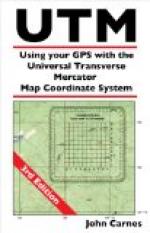|
This section contains 639 words (approx. 3 pages at 300 words per page) |

|
Physics is an experimental science, an therefore a science of measurement. Of all possible measurements, the most fundamental is position. To quantitatively locate an object in space (or space-time) requires a coordinate system (CS). The choosing of a coordinate system is nothing more than the assignment of a label to each point in space. (In general, such a label is an n-tuplet of numbers, where n is the dimension of the space. Thus it requires three numbers to label a point in space, and four numbers to label an event in space-time.) In order to compare measurements between coordinate systems a set of equations relating the two different labels assigned to the same physical point is required. These relations are known as "coordinate transformations."
The simplest CS is the well-known Cartesian system, with three orthogonal (mutually-perpendicular) axes, usually labeled x, y, and z. It is...
|
This section contains 639 words (approx. 3 pages at 300 words per page) |

|


